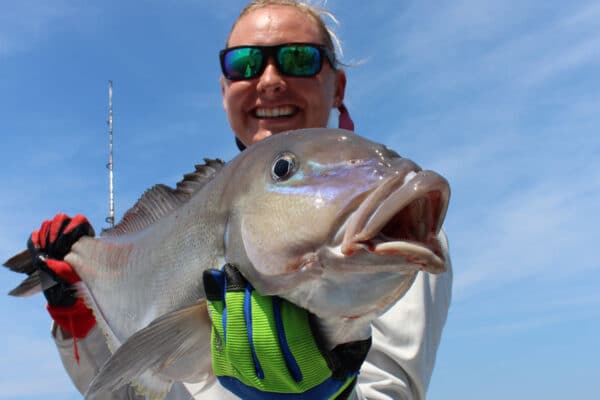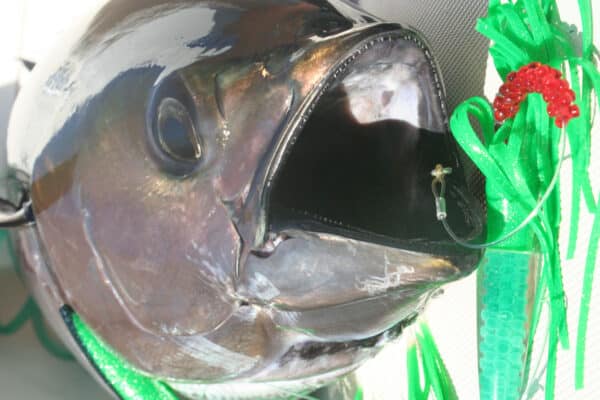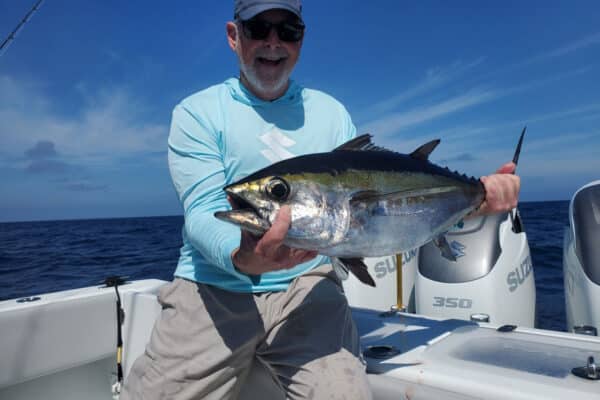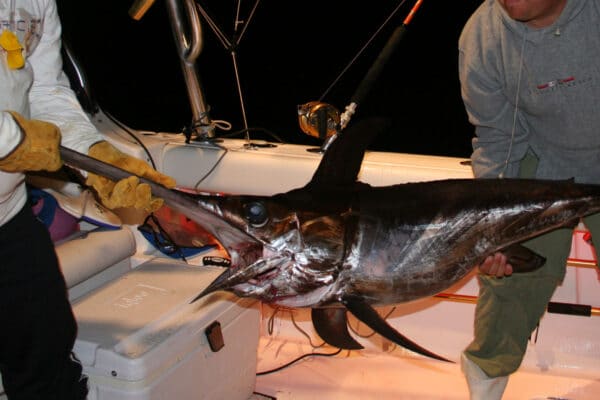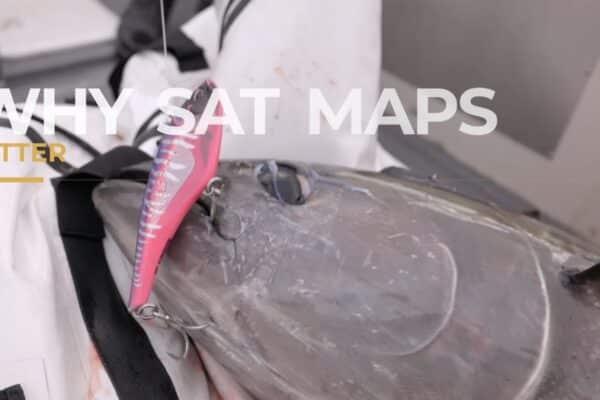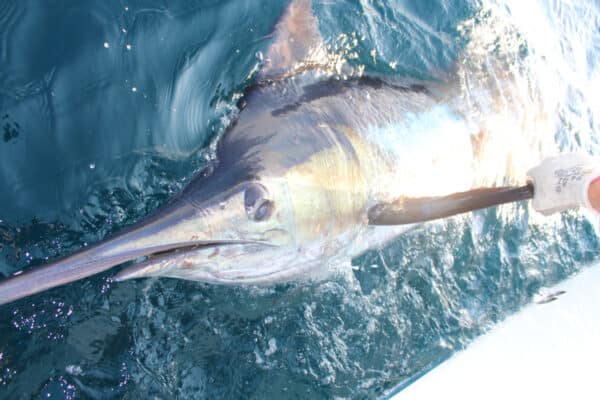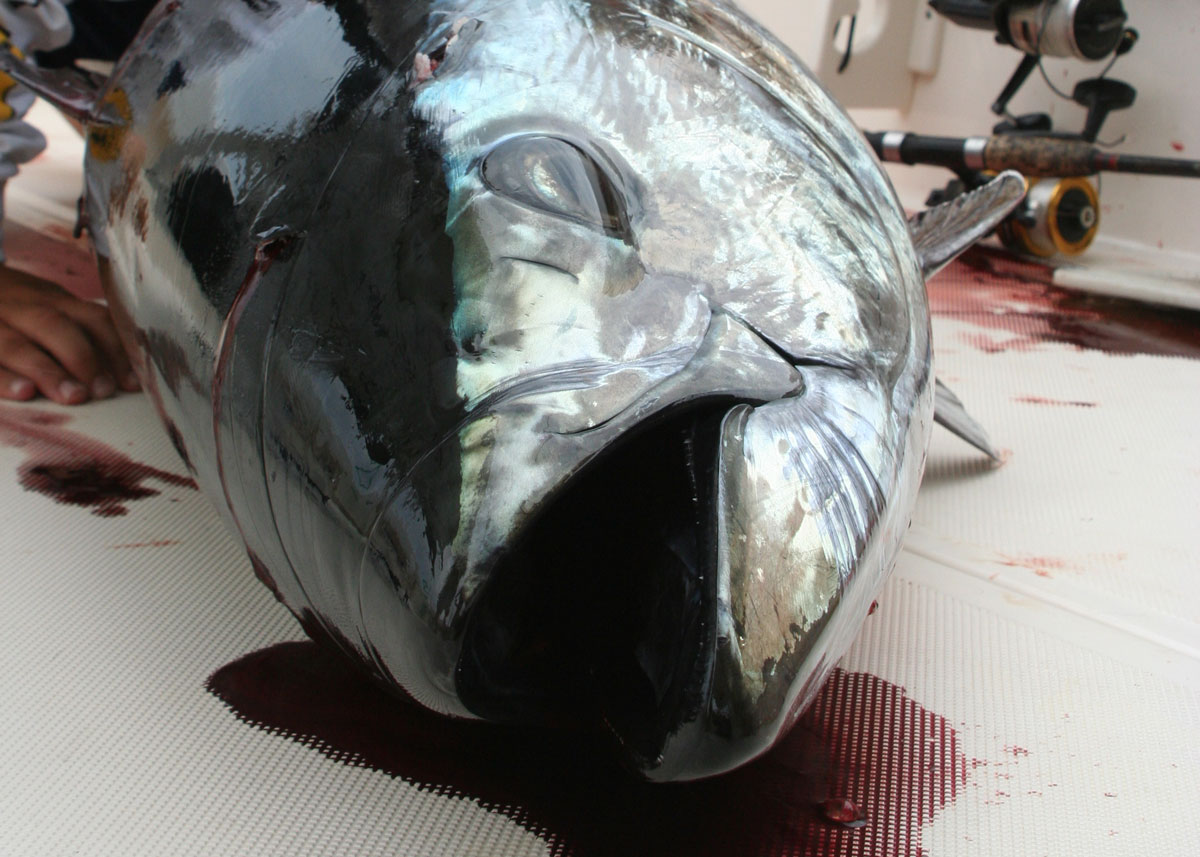
When bluefin tuna are sitting deep, speed jigging is fire.
You can see bluefin tuna on the meter down deep, and they won’t hit baits trolled on the surface? This happens a fair amount in some areas, such as in the Mid-Atlantic region when the tuna are feeding on sand eels over humps in a couple-few hundred feet of water. Trollers will likely remain frustrated—and this is a scenario where speed jigging shines. Here’s how to turn those marks on the meter into mayhem in the cockpit.
Speed Jigging Rigs
Speed jigging combines the action of the rod with the speed of the retrieve to get that spoon zigging and zagging just so, but using the right gear is critical. The rod should have a slow-action tip and a very stout midsection, and be paired with a high-speed reel that delivers maximum line retrieval per crank. Braid in the 65- to 100-pound test range (depending on the size of the fish you’re likely to encounter) is a good choice, and it’s got to be braid since stretchy mono will absorb the motion being imparted to the jig.
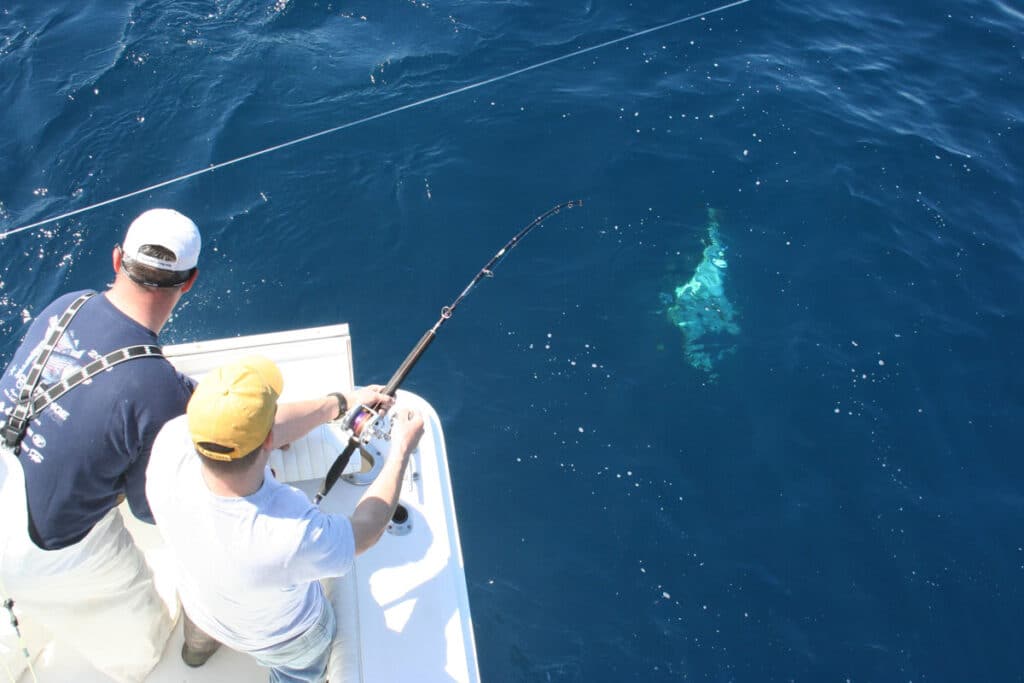
With the right setup (and there are plenty of rods and reels designed just for speed jigging on the market these days) you let the gear do the bulk of the work for you. Effective speed jiggers don’t sweep the rod up and down. Instead they move the rod minimally, just a foot or so in a circular motion shadowing the cranking of the reel. Done properly the whippy tip loads and unloads, which gives the jig it’s fast but erratic motion.
While the Butterfly was the original speed jig, today there are a million and one offerings on the market intended for this style of fishing. But two key points need to be addressed. First, you don’t need to add a million hooks to the jig. A single hook rigged to the top of the jig will work just as well as adding a second hook, putting hooks on the top and bottom of the jig, or adding a treble hook on the bottom. Those other variations do have their proper uses; adding a treble is appropriate for vertical jigging, and a second hook becomes advantageous when baiting the jig and hovering it over a wreck or reef. But these are different forms of jigging—not speed jigging. And when you’ll be ripping that spoon up through the water column at a blinding pace, all the extra hardware increases the chances of a tangle without increasing the hookup ratio. Second, remember that bluefin are perfectly happy to slam deceivingly small jigs. Pick one appropriately heavy for the depth of the fish, but beyond that when it comes to size, less is more and a four-inch jig is plenty big to draw attacks from 100-plus-pound tuna that see it as an easy snack, if not a full meal.
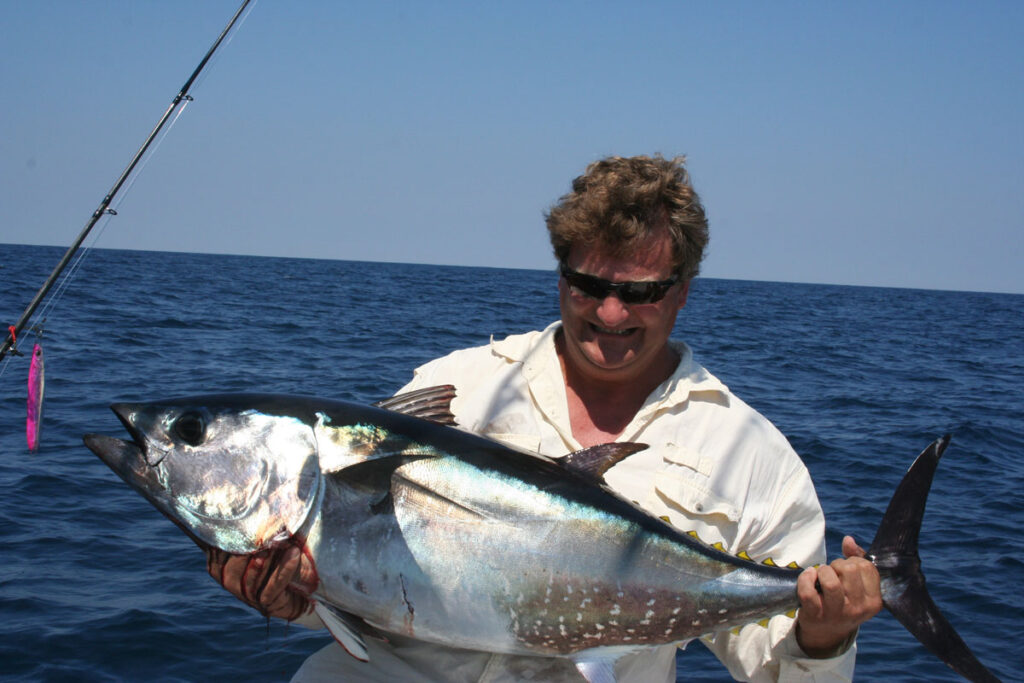
Tip: While jigs of any color can prove best on any given day, pink and blue/white mackerel patterns are often killers on deep bluefin.
Speed Jigging Tactics
Rigged and ready to roll, the most critical element is finding fish on the meter, identifying their depth, and dropping jigs right in front of their nose. Finding the fish, of course, usually means finding the bait. Depending on where you are and the time of year, this likely means surveying SatFish for temp breaks, colliding currents, and chlorophyll edges. At some times in some places (like when those fish are focused on sand eels) the fish might be related to structure like humps and bumps on the bottom that’s attracted their prey. In either case, spotting the fish and nailing down their depth is critical to success.
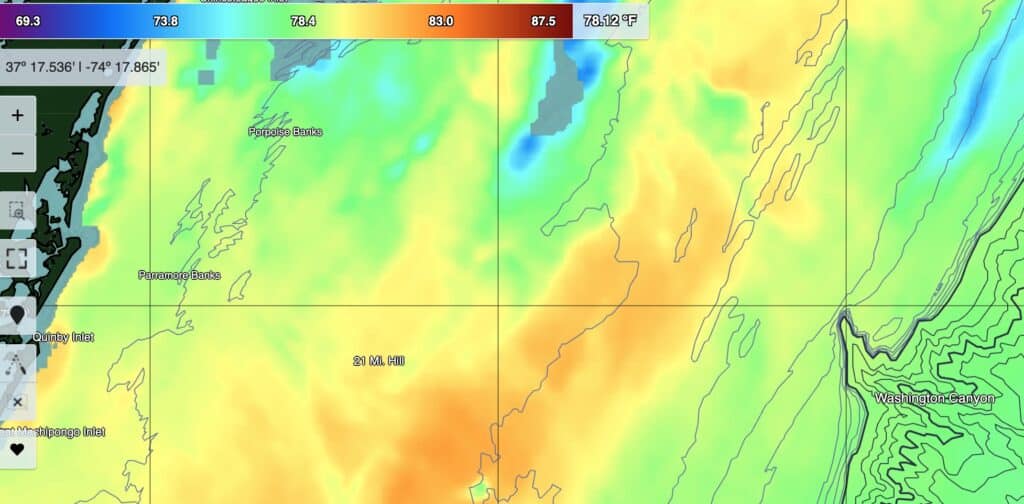
Once you’ve figured out where the fish are you’ll need to position your boat either up-current or upwind far enough that your jig hasn’t drifted beyond the fish by the time it reaches their depth. Drop 30’ to 50’ below the depth of the fish you marked on the meter, then start cranking. Remember, the whole point of speed jigging is to trigger a pursuing strike and the fish will hit it while you’re cranking; you’re not looking for a strike on the fall, as with most other forms of jigging. So get below those fish and once you start cranking settle into a rhythm and keep it up.
When you see the jig flashing up towards the surface you’ll have to make a judgement call: have you passed the fish by, or are you still seeing marks as you’ve drifted? You were paying attention to the meter the entire time, weren’t you? If it’s gone blank keep that jig in the boat and circle back to where you saw fish. If you’re still seeing them, send that chunk of shiny metal right back down.
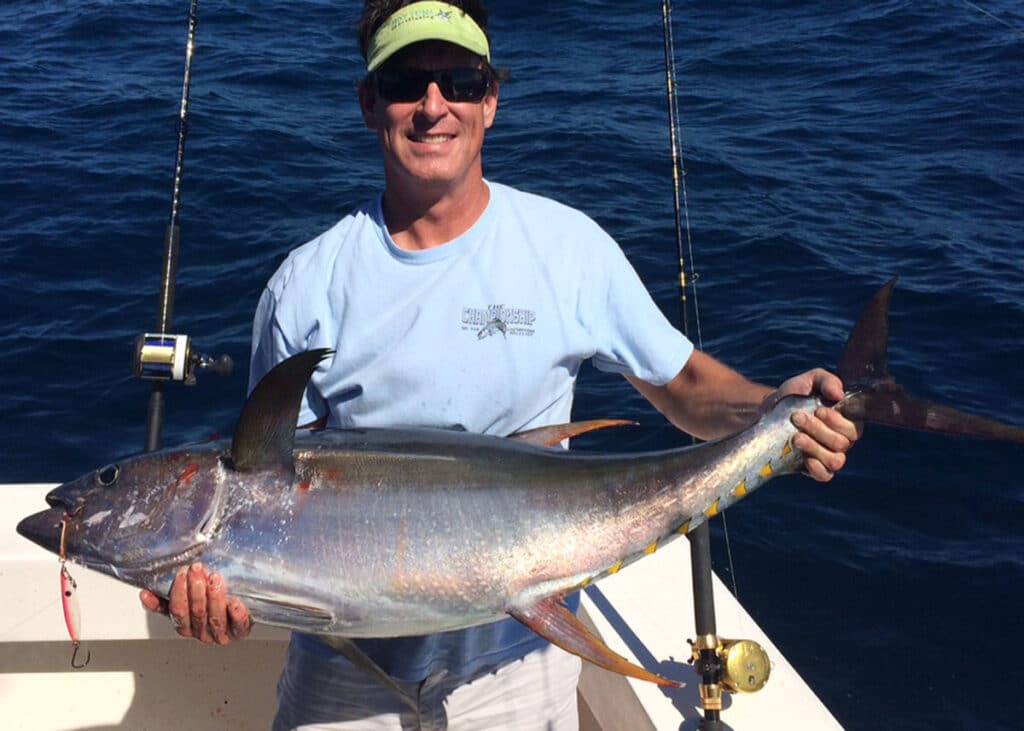
Double-Bonus Tip: If your jigs are getting smacked on the fall, you’re not hooking up, and you’re not getting slammed on the retrieve, take the hint and don’t try to argue with the fish. Swap jigs for one with a treble on the aft end and switch to a vertical jigging style.
One final warning: speed jigging is not for the faint of heart. Even the most ambitious anglers among us usually can’t keep it up for too terribly long, and you’ll be breaking a sweat in minutes thanks to all that super-fast cranking against several ounces of lead. But the next time you see fish a hundred or two feet down and your trolling baits go untouched, reach for that speed jigging rig. When bluefin are lurking deep down below, it’s one of the best ways to get ‘em chewing.

